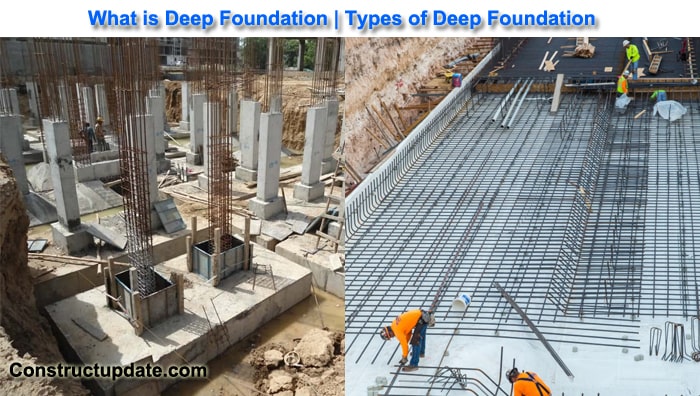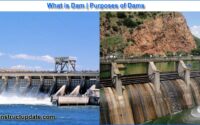What Is Deep Foundation | Types of Deep Foundation
What is Deep Foundation?
A deep foundation transfers a building’s load through solid soil layers or rock beds that are accessible at great depths. When the earth beneath or close to the ground is incapable of supporting a building and loads must be transmitted to deeper layers, deep foundations are required.
A deep foundation is a foundation that is installed a significant distance below the ground’s surface and transmits building loads to the earth at depth. The depth to width ratio of such a foundation is often greater than 4 to 5.
A deep foundation is more difficult and expensive to construct than a shallow foundation.
Types of Deep Foundations:
Common Deep Foundations Examples Include:
- Pile foundations
- Caissons
- Cylinders
- Basements
- Hollow Box Foundations (Buoyancy Rafts)
- Shaft Foundations

Pile Foundations
Pile foundations are built by either pushing pre-made units into the requisite founding level or drilling into the specified depth and driving tubes loaded with concrete. Concrete can be poured into the tubes in a variety of ways, including during or after withdrawal, or by drilling unlined, partially lined, or fully lined boreholes before filling with concrete.
When soil, constructional, or economic considerations necessitate the transmission of structural loads to strata beyond the reach of shallow foundations, these foundations are used. Piles can be used to resist uplift, overturning, and lateral stresses in addition to sustaining structures. They’re utilised to support shoreline installations, bridges, and structures.
Caissons
These are hollow substructures that can be built near or on the ground surface and buried as a single unit to the required level. They are widely utilised for bridges because of their tremendous load-carrying capability.
Cylinders
These are small caissons with only a single cell.
Basement Foundations
These hollow substructures provide below-ground storage or working space. They’re built in open-air excavations. Their structural design is dictated by their functional requirements.
Buoyancy Rafts
Buoyancy rafts, also known as hollow box foundations, are meant to generate a semi-buoyant or buoyant substructure beneath which the soil is loaded at a low intensity. They can be built in open excavations or sunk into the ground like caissons.
Traditional foundations are more expensive than buoyancy rafts. As a result, their application is mainly limited to areas with deep silts, soft sands, and other alluvial deposits, or where loads can be maintained concentric. Underground tanks are required in many schemes, and deep basements are cost-effective to incorporate into the design.
Shaft Foundations
Drilling a cylindrical hole within a deep excavation and then filling it with concrete or another prefabricated load-bearing unit are the methods used to build these foundations. They may be simply customised in terms of length and size. Drilled shafts can be built close to existing structures and with low overhead, making them ideal for a variety of seismic retrofit projects. However, some situations, such as soils with rocks, soft soil, loose sand, and sand underwater, may make installation difficult.
Advantages of Of Deep Foundation:
- Because piles can be built off-site, they can be promptly put on-site.
- The induced piles shift and compact the ground, enhancing the pile’s bearing capacity.
- The piles will keep the facility safe and secure for many years.
- Increase your overall output.
- A pile is quickly damaged by driving through stones and pebbles.
- Piles can be harmed by saltwater marine bits.
- It is impossible for a stack to be taller than the ground.
- It’s difficult to determine the exact amount of time required ahead of time.
- When the piles are driven, vibrations are produced, which influence nearby structures.
Disadvantages Of Deep Foundation:
- Corrosion can occur in piles.
- Inspection is required on a daily basis.
- To repair the piles, skilled labour is required.





